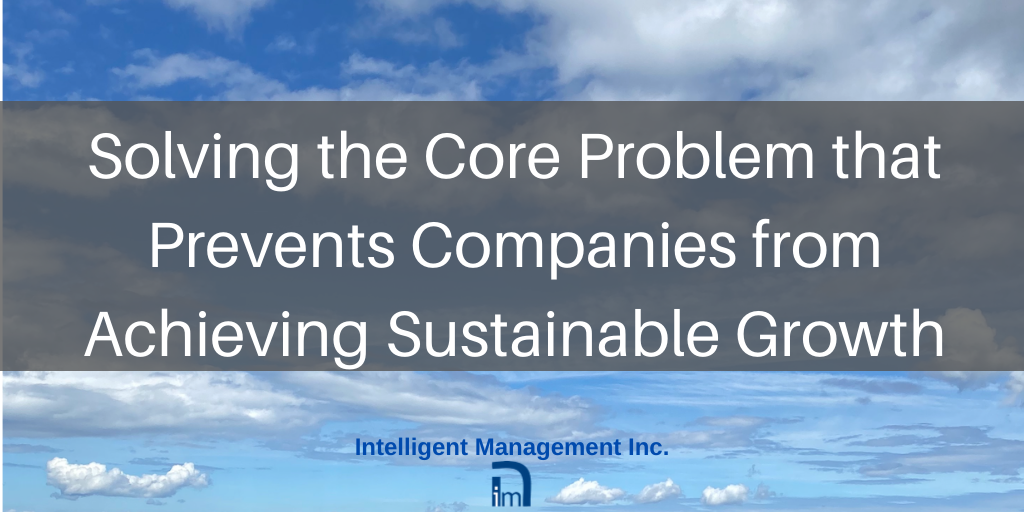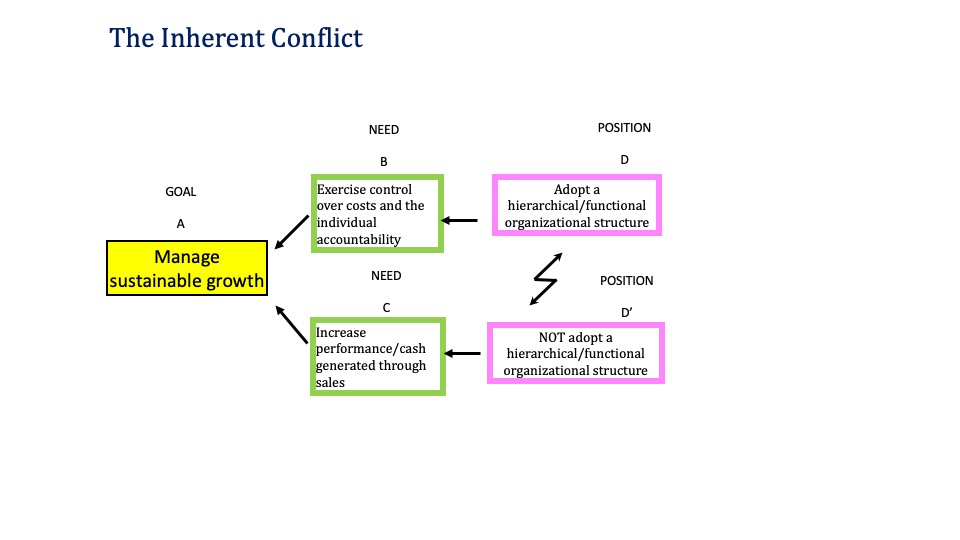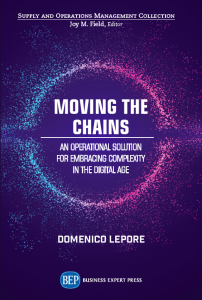
The only way to solve systemic problems is through systemic thinking. This is what allows us to step back and ask the fundamental questions so we can develop valid solutions. In Part 3 of this this new series, our Founder, Dr. Domenico Lepore, continues from Part 1 and Part 2 with the questions that allows us to find out what it is that prevents companies form achieving sustainable growth and how to find a solution.
“Complexity”, the science that studies what happens when things start interacting, has been largely ignored when it comes to designing and managing (not to mention measuring) organizations. Using a systemic Thinking Process from the Theory of Constraints (TOC), we can summarize it as follows:

When we map out a conflict using the Conflict Cloud, we can then read it from left to right as follows:
If our goal is to manage complexity, and an element of complexity is its components, then we need to understand the components, and if the simplest way to understand/manage the components is to break the complexity up, then we want to break the complexity into its parts (focus on the elements that make up the structures).
On the other hand, if our goal is to manage complexity, and complexity is generated by interdependencies, then we need to understand the interdependencies, and if the links that create the interdependencies exhibit a dynamic that needs to be studied, then we want to focus on the interdependencies and dynamics (focus on the patterns).
We are in the conflict between D and D’ because we make the assumption that: the whole is equal to the sum of its parts; no new properties emerge from interactions among the parts; interactions among the parts are always and only deterministic and linear (mechanistic view).
Indeed, this is a completely generic verbalization, but when applied to organizations it takes the following shape:

We first presented this paradigmatic conflict in our 2010 book ‘Sechel: Logic, Language and Tools to Manage Any Organization as a Network’ and later in our 2016 book ‘Quality, Involvement, Flow: The Systemic Organization” published by CRC Press.
In other words: even in the face of a blatant inadequacy to cope with reality, conventional hierarchies (functional silos) still often prevail, plunging organizations into this conflict.
In the aftermath of the 2007 crisis, following a very hard professional defeat, my team at Intelligent Management and I started to ask ourselves how it is possible, operationally not just conceptually, to come out of this conflict. We set out to find a generally applicable solution, something that would help us overcome this dichotomy.
The starting point was The Decalogue, developed 10 years earlier with Oded Cohen and first published in 1999 by Dr .Goldratt’s publisher, North River Press as ‘Deming and Goldratt: The Decalogue‘.
The Ten Steps of the Decalogue are:
- Establish the goal of the System, units of measurement, and operational measurement
- Understand the system (map the interdependencies)
- Make the system stable (manage variation so that processes are statistically predictable)
- Build the system around the constraint – a strategically chosen leverage point
- Manage the constraint – Buffer Management
- Reduce variation at (of) the constraint and the main processes
- Create a suitable management/organizational structure
- Eliminate the “external constraint” – sell all the capacity the system has available
- Where possible, bring the constraint inside the organization and fix it there
- Create a program of continuous learning
In essence, what we wrote is that there is an algorithm, a protocol, to ensure long term sustainable growth for any organization and a coherent systemic design that this protocol engenders.
What we came to realize is that, if this is the inherent conflict of organizations and these are the key assumptions (mental models) between D and D’ that make the conflict persist…

…then we need to find an “injection” – a systemic solution that invalidates the assumptions between D and D’ while protecting the legitimate needs in B and C of the conflict cloud.
The solution we developed to overcome the inherent conflict is the organization as a system designed around a constraint.


The Missing piece
Yes, “The Organization seen as a system”, constrained in one strategically chosen point, protected by a buffer whose oscillation is managed according to the principles set forth by Walter Shewhart (and magnified by the work of Dr. Deming), IS indeed the injection (solution) to the conflict and a solution for sustainable growth. But how, exactly, can we bring it to fruition with the aid of The Decalogue?
OTHER ARTICLES IN THIS SERIES:
- Deming, Goldratt and Critical Chain – the Pillars for Transforming Management and Organizations Today
- A New Perspective for Business Management
- Solving the Core Problem that Prevents Companies from Achieving Sustainable Growth
- How to Scale a Business Sustainably
- The Key Ingredients of an Organization Redesign for Complexity and Speed
- How to Improve Company Culture and Performance with a Transformation Based on Competencies
- Transforming to an End-to-end Operating Model with a Whole System Technology
- Scheduling a Project – the Most Critical Activity for Every Business
Contact: intelligentmanagement@sechel.ws
SCHEDULE AN INTRODUCTORY CALL WITH US ‘







Leave a Reply